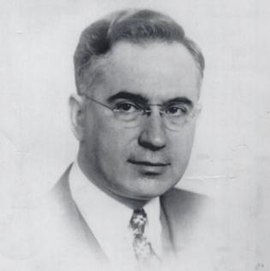Samuel S. Cohon
In 1904, the sixteen-year-old Cohon immigrated to the United States, He then chose a rabbinic career and began attending Hebrew Union College while studying concurrently for an A.B.
Kohler, a native of Fürth, symbolized the older generation of Reform rabbis who championed the rationalistic and ritually minimalist "Classical" era, embodied in the 1885 Pittsburgh Platform.
Cohon believed that the Classicists overemphasized morals and ethics, ignoring the important functions of ceremonial acts, practical observance and Jewish particularism, expressed in such elements as Hebrew prayer.
Cohon, while agreeing that ethnic solidarity, a sense of continuing tradition and communal life were a major factor in Judaism, never renounced the doctrines of a personal God, divine revelation and the Election of Israel, as did Kaplan.
He worked to introduce his philosophy into the Union of American Hebrew Congregations, where "Classical Reform", strongly identified with native Jews whose forebears arrived from Central Europe in the 1840s and 1850s, was losing ground to new immigrants from Russia and Poland.
Cohon maintained belief in an ongoing revelation of God's will, much en sync with the progress of human consciousness, reflected but not identical with scripture and the conventions of Judaism in the past.
[5] His convictions were of key importance as the movement shed Classicism in favour of a heightened sense of Jewish particularism and communality, laying the foundation for "New Reform Judaism".
In 1931, Cohon published What We Jews Believe, a short primer aimed at initiating unlearned people at the basics of Judaism, in which he also conceitedly expressed his views.
The decade saw the Great Depression, as many communities were short of collapse, the rise of antisemitism in Europe and an influx of immigrants' sons into UAHC, who were befuddled by Reform's advocacy of strict personal autonomy and sought a more coherent and concrete expression of religiosity.
Cohon opposed a definitive dogmatic approach as well, and rejected Levy's tentative proposal to author a comprehensive religious manual for daily practice, but he did espouse a concise and clear document that would give congregants something tangible to uphold.
The retention and development of such customs, symbols and ceremonies as possess inspirational value, the cultivation of distinctive forms of religious art and music and the use of Hebrew."
